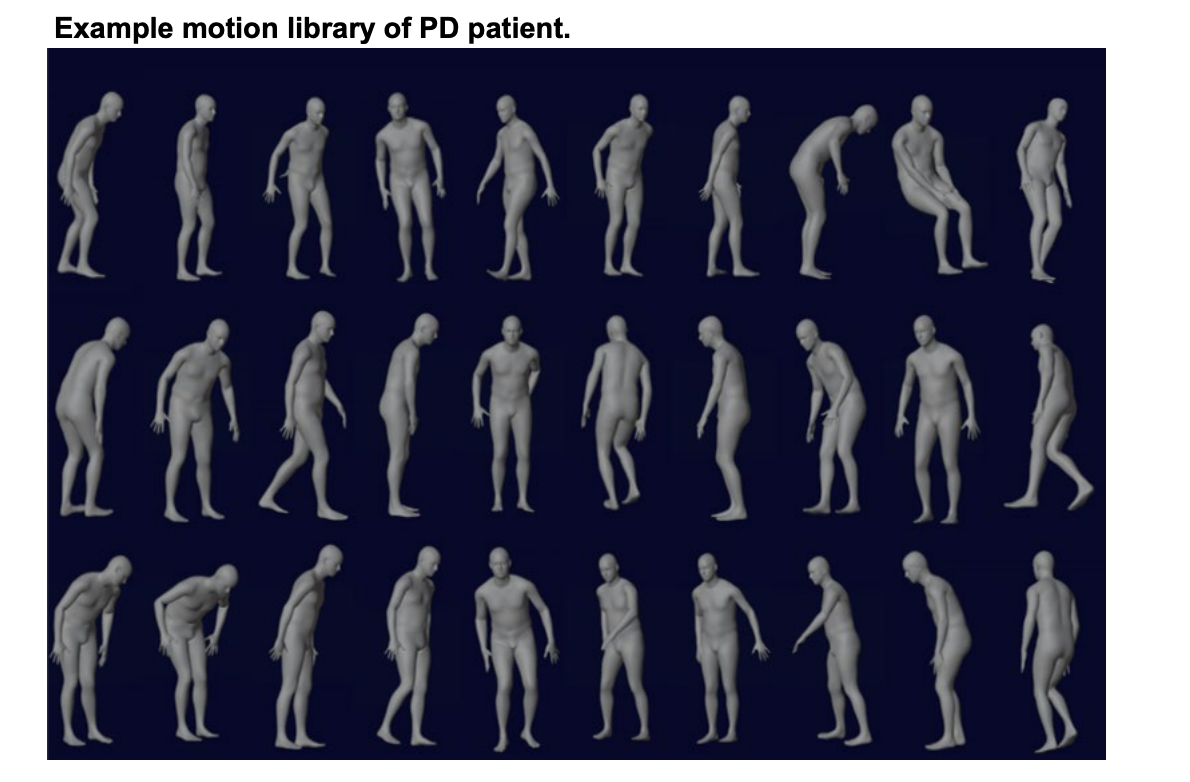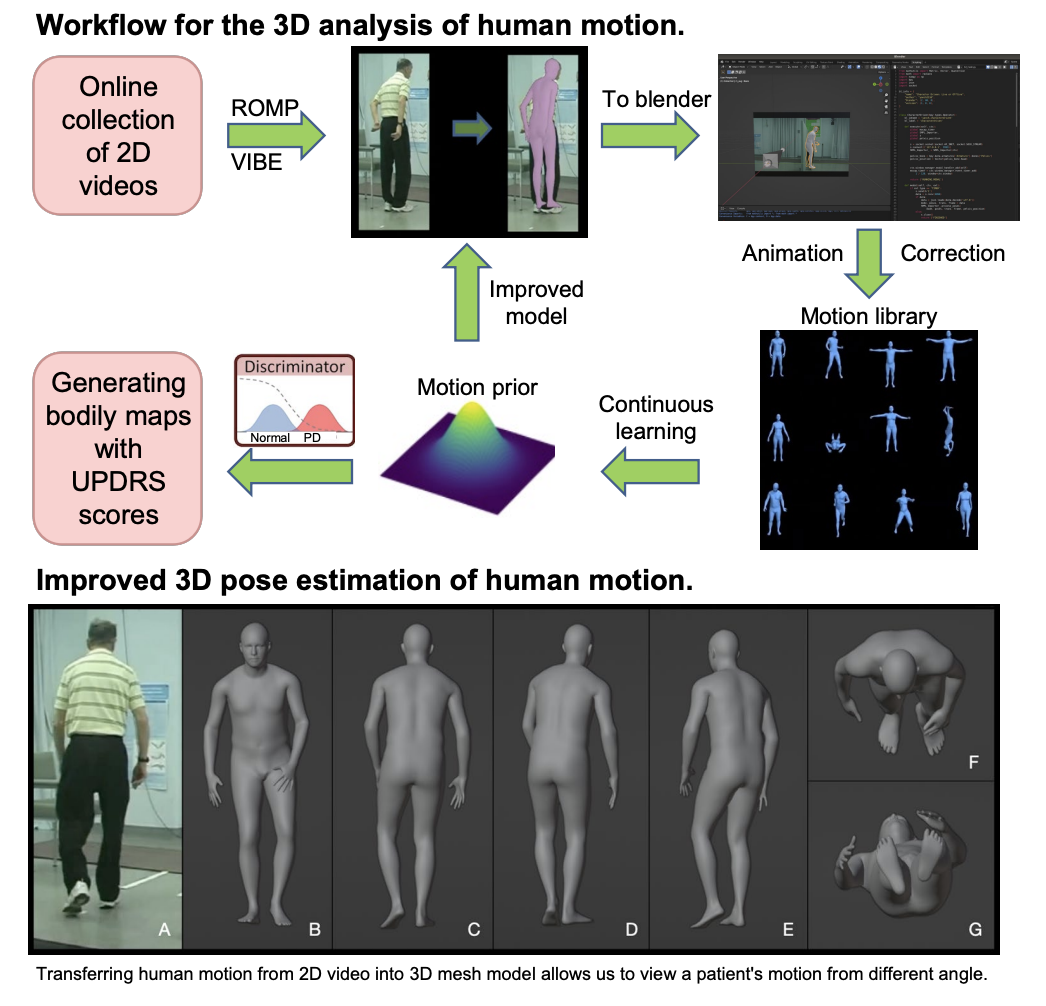Introduction:
The current diagnostic process for human movement disorders or psychomotor disturbance, such as Parkinson’s Disease (PD), relies on qualitative and subjective analysis. Objective, quantitative, and interpretable assessments of motor impairment are very needed to optimize treatment decisions and evaluate new therapies. The 3D human model originated in the early 1970s, has become much more accurate, and has seen successful applications such as 3D pose estimation. However, the application of this advanced tool in human patients is still very limited. To this end, we developed a pipeline to automate the 3D analysis of motor deficits using 3D human models and computer vision methods. We first set up several existing 3D Human Pose Models, including ROMP and VIBE, to predict 3D motion from 2D videos. We then automatically imported 3D motion data to Blender and used it as an interactive interface to animate the 3D mesh model (SMPL) to fit the patient in the 2D video. In this way, we create a 3D Motion Library of PD patients that can be used as the training set to learn motion priors, which models the inherent probability distribution of human motions. Finally, a discriminator will be trained to generate bodily maps for the visualization and evaluation of motor deficits of the patients

Discussion & Conclusion::
Our pipeline will serve as a groundwork for transferring 2D video data to 3D virtual human models, which will lead to standardization of processing, visualization, and more robust analysis. The video- based computer vision method is a competitive candidate for automating and assisting diagnosis as both the raw and inference procedures are more informative and instinctive for clinicians than the sensor-based method.
